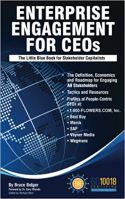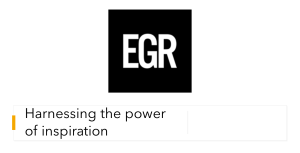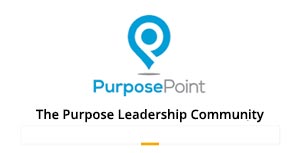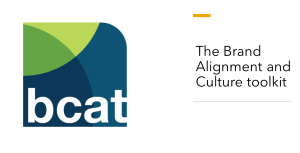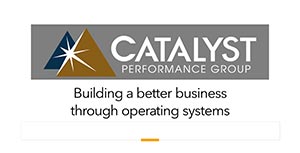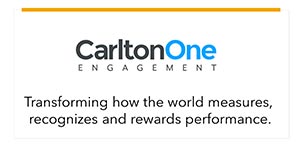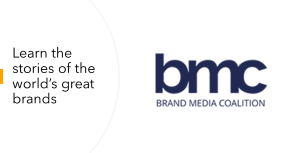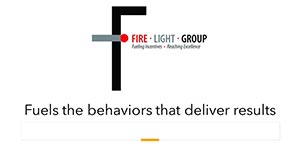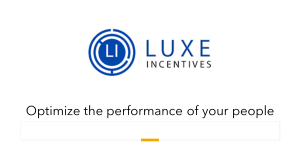Knowledge - Studies
Published: Feb 23, 2015

Don McPherson, President and Co-Founder of Minnesota-based Modern Survey, recently noted that when people say they know and understand the organizational values of the company they work for, those people are 51 times more likely to be "Fully Engaged" than ... [ read more ]
Published: Jan 14, 2015
A new study by the Incentive Research Foundation, 10 Trends for Merchandise and Gift Card Programs in 2015, notes that retaining top performers and preparing them to take over the reigns during the next decade is a top priority for most organizations. A crucial part of that process will involve Merchandise and Gift Card... [ read more ]
Published: Sep 16, 2014
Cindy Mielke, VP of Marketing at Marketing Innovators, recently wrote about how technology has changed the way we handle almost everything, including how we communicate. From the increasing prevalence of cell phones to the introduction of social networks, ... [ read more ]
Published: May 28, 2014

In this excerpt from his new book, ‘Laddering: Unlocking the Potential of Consumer Behavior,’ PossibleNOW VP Eric Holtzclaw explains how techniques such as laddering, lensing and latticing can radically and permanently change the way you view your products, services, customers and marketing message ... [ read more ]
Published: Aug 14, 2013

If recognition is thoroughly woven into the fabric of your culture, it becomes a true measurement tool of individual and organizational performance... [ read more ]
Published: Feb 2, 2012
This paper explores how to keep employee engagement alive, even during economic downturns. The ideal engaged employee has a proven track record of making meaningful contributions, speaks positively about the organization to friends, coworkers, clients and potential employees, and puts forth the extra effort to be successful over the long term. Since employee engagement is proven to have a measurable impact on profitability (due to enhanced productivity, innovation and the quality of goods and services delivered) the imperative for managers becomes development of engagement strategies and practical implementation. If you haven’t done so already, now is the time for you and your team members to take the initiative – define what your engagement objectives are, how they will be accomplished and get the necessary buy-in. Understand that engagement efforts don’t fall only to managers; the process needs to be a two-way street. Employees have high expectations of management, and management should have the same high expectations of their employees. Read the full white paper here... [ read more ]
Published: Feb 1, 2012
Research shows employee and employer confidence in the health of the U.S. economy is growing, but it’s a bumpy ride. Employees have been beaten up over the past several years. They’ve survived budget cuts and layoffs, been asked to do more with less and have shouldered the burden of many of those decisions. As a result, two out of every three of your employees are likely to be heading for the exits and new jobs when the U.S. economy turns around. An engagement strategy focused on transparency, communication and recognition for their loyalty could stem that rush to the door. Three ways to quickly turn the situation around are 1) Build transparency within your organization, 2) Provide opportunities for growth, and 3) Reward employees for meeting or exceeding those expectations. Here’s how… Read the full report... [ read more ]
Brand Architecture is an essential process in all marketing, as it provides the framework for establishing an organization’s personality and unique selling proposition. In the old days, companies rarely concerned themselves with the cost of dissatisfied customers, as long as business was growing. ... [ read more ]
A new white paper, 10 Tips to Build Brand Values Into Recognition Programs, notes that a large part of designing an employee incentive, rewards and recognition program is focused on productivity, compensation and profitability. An equal part of the strategy, however, is centered in how these initiatives tie back to the core messages that are integral to business values and brand promise. This article highlights 10 popular brand values, how they’re supported through incentive, rewards and recognition programs, and some of the communications ideas that can help build more creative, effective, and memorable programs. ... [ read more ]
At least two major U.S. companies offer proof that a focus on engagement can provide dramatic results. The CEOs of major companies in two very different industries – Schering-Plough and Campbell’s Soup – changed the culture of their organizations over the last several years by implementing a management strategy that engaged employees to concentrate on customer-focused innovations. And the results were demonstrated in improved profitability and shareholder returns. ... [ read more ]
The argument for better Employee Engagement has never been more compelling. Articles, papers and blogs abound covering the philosophies and tips for improving work environments, social conditions and organizational sensitivity.... [ read more ]
Motivation management & research firm Maritz recently released two white papers touching on key areas of engagement. The first, A New Paradigm for Loyalty Marketing: Building Loyalty Along the ‘Earn, Burn, Yearn’ Continuum, notes that just as advertising has evolved to address multiple consumer segments, loyalty marketing’s approach must also adapt to multiple customer personas. Program messages and communication should be tailored and segmented to reach these specific personas, and the value proposition of the rewards needs to appeal to enrolled participants. With this approach, a one-size-fits-all loyalty program instead becomes an authentic customer engagement program that’s based on relevance and relationships.... [ read more ]
Are there differences in how a computer manufacturer plans and implements an incentive program versus how a pharmaceutical company or new car dealer does? What about a commercial banking operation, insurance agency or a telecommunications company? Are there processes, types of incentives used, or other nuances that are unique to these markets? Which industries are more likely to develop their programs in-house, as opposed to securing an outside vendor? The Vertical Market Study attempts to answer these and other questions. It provides a full report on how the six specific industries planned and implemented incentive travel,
motivational meetings and special events.... [ read more ]
This recently conducted analysis by The Incentive Research Foundation (IRF)of one company's long-standing use of travel awards as a motivational tool shows that such incentives have a clear, measurable and positive impact on corporate culture and employee performance, as well as a broader "ripple effect" on the economy of the region where an incentive travel program (ITP) is held.
Overall, the study concluded that the importance of these programs should not be undervalued; their impact and their value reach well beyond the typical event timeline. Earners of the incentive travel program are far from the only beneficiaries of the program. The sponsoring company, the destination and the suppliers all receive significant benefits as well.
... [ read more ]
The Incentive Research Foundation (IRF) surveyed industry professionals during the month of April 2010, asking them about incentive travel programs, merchandise/non-cash programs, and ROI/budget considerations. The most promising data show that respondents appear to be more optimistic about the current economic climate than they were in either the Summer or Fall of last year. When asked, "In your opinion, what impact will the economy have on your ability to plan and implement incentive travel programs?" 69% say it will have a positive impact vs. only 33% in the Fall of 2009 and just 24% in the Summer of 2009. Similarly, those who say the economy will have a positive impact on merchandise/non-cash incentive programs increased from 20% (Summer '09) and 26% (Fall '09) to 41% currently. Still, one-third of those surveyed predict that budgets for incentive travel will decrease this year, while 37% say they'll remain unchanged. Things were a little better on the merchandise/non-cash side, where only 22% expect a decline (down from 51%), while 40% predict an increase and 37% say they see no change in budgets. This indicates that although there's an uptick in optimism about the economy in general, it may not translate into more money for programs – at least not in the near term. ... [ read more ]
Given that the Incentive Research Foundation (IRF) is charged with advancing the science of incentives, it surveyed industry professionals to obtain their opinions about the more salient trends affecting the industry during 2009 and leading into 2010. The IRF asked these professionals questions on trends with regard to incentive travel programs, merchandise non-cash programs, and budget changes forecast for 2010. Findings indicate that the trends are stabilizing for each of the core issues since March 2009. However, the trends remain significantly lower than in 2008. Survey participants expect more domestic than international destinations, "slightly smaller" budgets, and shorter stays for incentive travel in 2010. A majority of participants also expected decreased award values on the merchandise side.
... [ read more ]
Most leaders and organizations know the difference between a fully engaged worker and one that is marginally engaged or disengaged. The former brim with enthusiasm, they contribute ideas, are optimistic about the company and its future, are seldom absent from work, they typically stay with the organization longer and are among the organization’s most valuable ambassadors. Disengaged workers, on the other hand, are often absent (even when they are at work). They are disconnected and often pessimistic about change and new ideas. They have high rates of absenteeism and tend to negatively influence those around them, including potential customers and new hires. And the cost of disengagement to U.S. employers is estimated to be as much as $350 billion per year.... [ read more ]

Engagement doesn’t just happen, and in most organizations frontline management has a lot to do with the success - or failure - of an organization's engagement efforts. Recent research from the Gallup organization on employee disengagement ... [ read more ]
A common error that frontline managers sometimes make is to focus their performance improvement efforts on employees’ weaknesses, rather than focus on their strengths. But Gallup research shows that the worst thing managers can do is to ignore their employees altogether. According to Gallup researchers Brian Brim and Jim Asplund, “If your manager focuses on your strengths, your chances of being actively disengaged at work are only 1 in 100. If your manager ignores you, however, you are twice as likely to be actively disengaged than if your manager focuses on your weaknesses. Being overlooked, it seems, is more harmful to employees’ engagement than having to discuss their weaknesses with their manager.” This paper offers a summary of their research.... [ read more ]
To be successful in the evolving world marketplace, and even in their own workplace, leaders and managers must begin to understand their constituents’ state of mind, says Gallup’s chairman and CEO Jim Clifton, in this summary of recent Gallup research. Human decision making is more emotional than rational, the research suggests, and “State of mind is everything that matters to leadership: talent, innovation, entrepreneurship, creativity, optimism, determination, and all of the other things that create economic growth,” Clifton says. Successful leaders, he adds, will be those who can quantify those states of mind to better understand the emotions that cause behavior. “If you are making decisions without understanding what your constituency is thinking, you are making bad decisions,” he says. ... [ read more ]
This study, by Prof. James Oakley of Ohio State University, found a clear link between employee engagement and customer satisfaction, and customer satisfaction and profitability.... [ read more ]
For last year’s Summit, a research study was conducted to assess the drivers of employee satisfaction and engagement and the downstream customer and financial implications of these important employee attitudes. This research identified several unique organizational characteristics driving employee engagement, including employee satisfaction, and identified organizational communication as a key driver of employee satisfaction.... [ read more ]
This study, by Prof. James Oakley of Ohio State University, found a clear link between employee engagement and customer satisfaction, and customer satisfaction and profitability.... [ read more ]
This study delves into the mechanics of sales incentive programs, providing managers with useful information to design successful sales initiatives at their own companies and providing their corporate decision makers with hard evidence. It found that properly structured programs can increase sales by at least 10 percent. ... [ read more ]
This study, conducted by Prof. Frank Mulhern and Patricia Whalen of Northwestern University, identified a significant gap between the view of human resources and employees on the role of employees on delivering customer satisfaction, but found that companies with a close link between human resources and marketing outperform companies that don't.... [ read more ]
Showing Results 76 - 100 of 104








